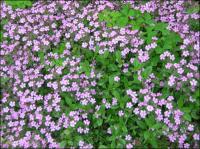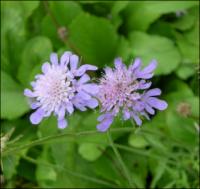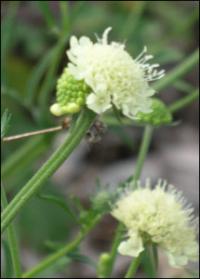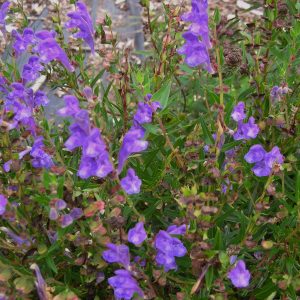Perennials & Biennials
Showing 401–408 of 485 results
-
Sanguisorba parviflora syn S tenuifolia var. parviflora, S. tenuifolia var. alba White Japanese burnet Z 4-8
Drooping white spikes (I know, drooping and spike are an oxymoron but you get the idea) atop tall stems and above narrow, dissected foliage as beautiful as the flowers. Blooming in July into September.
Drooping white spikes (I know, drooping and spike are an oxymoron but you get the idea) atop tall stems and above narrow, dissected foliage as beautiful as the flowers. Blooming in July into September.
Size: 3-5' x 18"
Care: Sun to part shade in moist well-drained soil
Native: Japan, Korea, Russia
Wildlife Value: attracts bees and butterflies, Deer resistant.Collected by 1874. (Maxim.)
-
Santolina chamaecyparissus Lavender cotton , Cotton lavender Z 5-9
Grown for its ornamental grey foliage, yellow flowers in midsummer
Grown for its ornamental grey foliage, yellow flowers in midsummer
Size: 20” x 36”
Care: Full sun in well drained soil
Native: Mediterranean area
Awards: Recipient of the Royal Horticulture Society Award of MeritChamaecyparissus means dwarf cypruss to describe its appearance. Shrub grown in English and Italian flower gardens since 1500’s. Italians planted it with other shrubs to form mixed hedges. Grown in American colonial gardens since 1670’s.
-
Saponaria ocymoides Rock soapwort Z 4-9
Small bright pink flowers bloom along dense, creeping branches hugging the ground in late spring into summer.
OUT OF STOCK
Small bright pink flowers bloom along dense, creeping branches hugging the ground in late spring into summer.
Size: 3" x 18"
Care: Sun, well-drained soil
Native: Spain to Yugoslavia
Awards: Received England’s Royal Horticultural Society Award of Merit.Both the botanical and common names come from the plant’s use as soap, the leaves “yeelde out of themselves a certain iuice when they are bruised, which scoureth almost as well as sope.” Gerard (1633). Soapwort is still used today by antique and art restorers for its gentle cleaning: chop dried leaves and roots, boil in water for 5 minutes, and then agitate to make suds. William Robinson, father of today’s mixed perennial border gardens, praised this as bearing “masses of rosy blooms.”
-
Scabiosa lucida Pincushion flower Z 4-9
Lilac pincushions all summer & fall
OUT OF STOCK
Lilac pincushions all summer & fall, non-stop
Size: 24" x 12"
Care: full sun in well-drained soil.
Native: Central and Eastern Europe
Wildlife Value: attracts butterfliesScabiosa from Latin scabies referring to the itch caused by a mite infestation, which another Scabiosa species allegedly cured. This species 1st described in a French publication in 1779.
-
Scabiosa ochroleuca Cream pincushion Z 4-9
Looking for a non-stop bloomer? Cream petals compacted together bloom atop tall, wiry stems from June to October
Looking for a non-stop bloomer? Cream petals compacted together bloom atop tall, wiry stems from June to October
Size: 18"-24" x 18"
Care: sun to part shade in moist well-drained soil. Drought tolerant.
Native: Europe & Asia
Wildlife Value: attracts butterfliesThe name scabiosa from Latin scabies refers to the mite infestation that this plant was supposed to cure; ochroleuca means “yellowish white.” First described by Swiss botanist Bauhin Caspar (1560-1642) in Pinax theatri botanici in 1623.
-
Scrophularia macrantha syn. Scrophularia coccinea Redbirds in a Tree, Mimbres figwort Z 5-10
This sub-shrub blooms from early summer until frost with white-lipped cherry-red, tubular flowers that look like a flock of inch-long, baby birds with open mouths waiting for food, each topping short stems along the branches. The margins of its oval green leaves are toothed.
OUT OF STOCK – EMAIL FOR AVAILABILITY
This sub-shrub blooms from early summer until frost with white-lipped cherry-red, tubular flowers that look like a flock of inch-long, baby birds with open mouths waiting for food, each topping short stems along the branches. The margins of its oval green leaves are toothed.
Size: 2-4’ x 18”
Care: sun to part shade in well-drained to moist well-drained soil. Little to no fertilizer.
Native: Three mountain tops in southern New Mexico (high elevations make it hardy to cold regions)
Wildlife Value: Its nectar is one of the best feeders and attractors for hummingbirds. Pollen and nectar also attract butterflies and bees.
Awards: 2008 Plant Select WinnerFirst collected on the Mexican Boundary Expedition by Charles Wright (1811-1885) and John Bigelow (1804-1878), “at the base of a rocky ledge near the summit of a mountain . . .a truly handsome species.” Described by Asa Gray, Torrey, John ed. Report on the United States and Mexican boundary survey Vol. 2 p. 111 (1859)
-
Scutellaria altissima Somerset skullcap Z 4-10
In early summer masses of upright stems bearing bi-colored, bluish-purple and white, snapdragon-like flowers, the hood being bluish-purple and the lower lip white. Flowers grow on one side of the spike. This will re-bloom if you cut the flowers.
In early summer masses of upright stems bearing bi-colored, bluish-purple and white, snapdragon-like flowers, the hood being bluish-purple and the lower lip white. Flowers grow on one side of the spike. This will re-bloom if you cut the flowers.
Size: 24-36” x 18-24”
Care: sun to part shade in moist well-drained to well-drained soil
Native: central & eastern Europe
Wildlife Value: pollen and nectar attracts bees and butterflies1st described and named in 1700 by Joseph Pitton Tournefort, French botanist.
-
Scutellaria baicalensis Chinese skullcap Z 4-8
Many stemmed clump, the top third of each stem bears one-sided ladders of rich purple flowers, from a tube connected to the stem opening into two petal-like hoods, one above the other, the top all purple and the bottom purple with a white blotch the shape of a handlebar mustache. This beauty blooms summer into fall.
OUT OF STOCK
Many stemmed clump, the top third of each stem bears one-sided ladders of rich purple flowers, from a tube connected to the stem opening into two petal-like hoods, one above the other, the top all purple and the bottom purple with a white blotch the shape of a handlebar mustache. This beauty blooms summer into fall.
Size: 12” x 12”
Care: sun in moist well-drained soil
Native: eastern Asia, Siberia
Wildlife Value: rabbit resistantLinnaeus’ imaginative mind named this genus after the Latin sculellum meaning “a little dish,” because of its resemblance to the flower’s helmet-shaped petal-like calyx. Used medicinally since ancient times in China to cure colds, fever, headaches, and insomnia.





